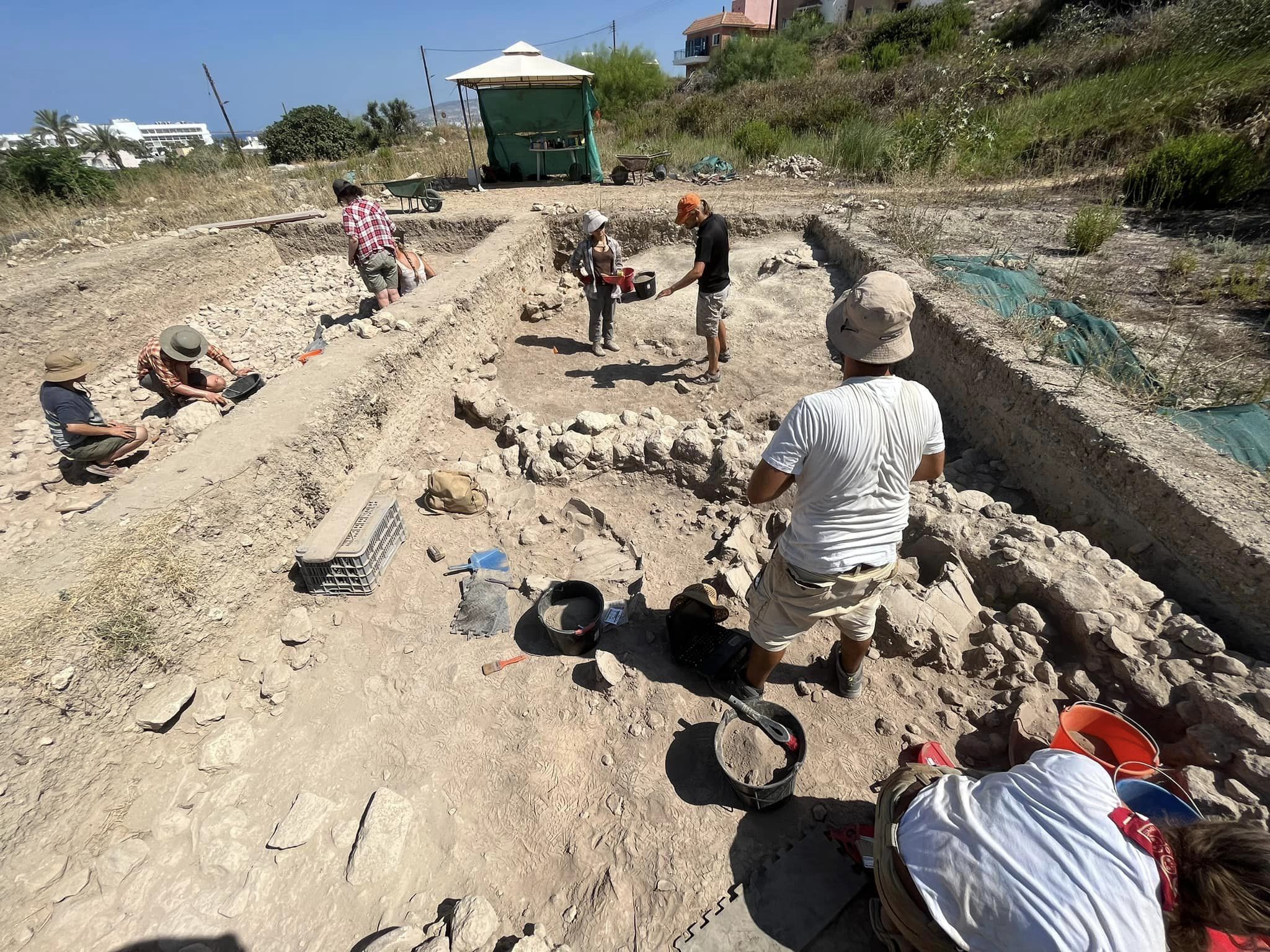Graves of children found at ancient site

Further significant findings have emerged from the Palloures site in Chlorakas, in an archaeological mission originally dubbed a last-minute “rescue excavation” prior to the area being razed by bulldozers.
The latest findings, which include graves of children and adults, are adding to the vast stock of information emerging from the site since excavations started in earnest ten years ago.
Excavations of the settlement, which dates back to 3,000 BC, are being conducted by researchers from the University of Leiden in the Netherlands, the University of Cyprus and the department of antiquities.
Early last year a building in an exceptional state of preservation was revealed at the site, with walls up to one metre high, a rare feature in late Chalcolithic Cyprus. Thick ashy deposits and a number of complete vessels, querns and mortars found indicated that the building had been destroyed by an intense fire.
The building and the floor deposits including prehistoric poo (coprolites) have provided the team of archaeologists with ample clues in their efforts to reconstruct the lifestyle, vessels, diet, health, societal structure and possible trade activities of the people who lived there 5,000 years ago.
“Archaeology is a great way to remind us that [our] neo-liberal capitalist system has not always existed, and different types of social models and relationships with the environment are possible,” said project co-coordinator Bleda Düring.
Archaeologists have been working at the Palloures site since 2015 but the site had been known about and visited since the 1950s.
“They were planning to build large villas and destroy all the archaeology so we were asked to investigate whether the site was valuable enough to be protected,” Victor Klinkenberg co-director of the project said.
When the archaeologists first arrived, terraces and roads had already been cut through the hill in which the ancient settlement was hidden.
“After three years of hard work it was determined that Palloures was indeed valuable enough to be preserved as a national monument,” Klinkenberg said.
The density of the finds at Palloures and the opportunity to reconstruct and shed light on the mysterious late Chalcolithic period makes the “backbreaking” manual labour worthwhile.
Among the interesting results are indications that residents at the site were not isolated from the broader region as had been previously assumed.
Another intriguing fact is that residents appeared to have deliberately burned down buildings.
“It is actually very difficult to burn down a mudbrick building so it is very likely they had to add fuel, making the fires deliberate,” Klinkenberg said.
“We think these buildings were burned down and then reused as a storage facility.” This could be due to arson or possibly a ceremonial activity, he said.
While questions remain, evidence from the site has now confirmed that Cyprus was no isolated backwater at the time but on the contrary was participating in wider Mediterranean trade networks.
The team has striven to build bridges with the local community and older residents have come forward with artefacts they had collected in years past, Maria Hadjigavriel, the team’s main liaison said.
“As a Cypriot archaeologist I find value in drawing parallels between [past and present] and pointing out the hybridity in Cypriot identity is not a bad thing and not a new thing,” she said.
The team welcome visits from the public to the site and offer tours by team members. More information can be found at www.palloures.eu and on the project’s Facebook page.
